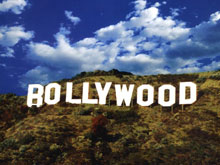On August 31, the Indian film industry’s latest mega-hit — Bodyguard — raked in US$4.4 million on its opening day. It’s no patch, of course, on the US$91 million recorded by Harry Potter and the Deathly Hallows Part 2. But these are big numbers for the Bombay (now Mumbai) film industry, popularly known as Bollywood. Bodyguard‘s first-day gross was a record for the Indian film industry. A week later, it became the fastest Hindi film to break into the US$20 million club.
There were 37 other films, made at a cost of around $100 million, scheduled for release by this month. After a bleak year in which industry revenues declined 6.7% in 2010, according to the “FICCI-KPMG Indian Media and Entertainment Industry Report 2011,” Bollywood is finally seeing the fruits of corporatization. “Corporatization has helped build scale and [give] sustainability to the business,” Anil Arjun, CEO of Anil Ambani Group company Reliance Mediaworks, told Indian business daily The Economic Times.
The Indian film industry produces the largest number of films in the world. According to ministry of information and broadcasting figures, in 2010, the industry churned out 1,274 feature films. Most were Hindi language films, but there were also those in Tamil, Telugu and Kannada. According to the KPMG report, the Indian film industry will grow to US$2.7 billion by 2015.
For years, the sector has been held back from gaining broader appeal and growth by the type of fare Indian audiences seem to want: Most of the movies are musicals of the “boy chases girl” variety. Until a few years ago, there were very few legitimate sources of film finance; money came from smugglers and the mafia with the obvious strings attached. Technology was practically prehistoric. Piracy was rampant. The star system created a financially precarious situation with one or two pricey actors taking the lion’s share of the budget and the producers having to cut corners everywhere else. And marketing ended with providing popcorn to the film critics invited for previews.
There are differences over corporatization and many feel that there is still a long way to go. “It’s a distant dream,” says Dheeraj Sharma, associate professor of marketing and international business at the Indian Institute of Management in Ahmedabad. In his view, the industry has grown because of the younger demographic that uses films for entertainment, and greater disposable income. However, “if we were to pinpoint the single biggest factor that has resulted in changes in the film industry, it would be technology,” he says. Added Arjun: “In the past five years, the growth driven by the multiplex industry has brought in over US$200 million additional box-office revenues every year, which has led to the development of the industry.”
The growth of the multiplex industry coupled with cheaper, more secure digitized film prints have been a key driver of Indian film revenue in recent times. According to the KPMG report, the industry, which currently has approximately 1,000 screens, is likely to double that count in the next five years. Other than Indian multiplex chains such as PVR and Inox Leisure, Mexican chain Cinepolis plans to build 500 screens across 40 cities in India. But screen density is just 12 per million people, which means there is much more scope to grow.
Beyond the Box Office
The Indian film industry has traditionally depended only on box-office sales for revenue. But taking a cue from Hollywood’s franchise method, Bollywood has opened up ancillary revenue streams such as in-cinema advertising, sale of cable and satellite rights, licensing and merchandising, and the TV pay-per-view format.
Sharma refers to this style of marketing as “a shotgun approach rather than a rifle approach. You have so many touch points and are at so many different places, that even if you have a 5% audience in those places the revenues coming in will be high.” All this has brought about another change: movies no longer run in the theaters for 50 weeks as they did in the past. So marketing now must happen in one concentrated burst.
The government has done its part by giving industry status to film production. The initial steps to that end were taken in 2000, but the effects have only started to appear now. Today producers are eligible for, and obtaining, bank loans. Last year’s biggest hit, Dabbang, was partly funded by the Securities Trading Corporation of India, which deals largely in government bonds. Still, “an extremely small percentage of Indian films are actually financed by banks and insured,” Sharma notes.
Ramesh Sippy, director of one of Indian cinema’s biggest hits — the 1975 film Sholay, which ran for 286 weeks — is also apprehensive about the changes. “I don’t think I could make Sholay in today’s corporatized Bollywood,” he told The Economic Times. There is also concern that corporatization clashes with traditions. “In a typical Hindi film, nearly 50% of the cost is [the payments to] its leading actors,” says Sharma. “For a Hollywood production, it is less than 10%.” So the economics don’t play out the same way.
Enter: Hollywood
But there are many ways in which Bollywood drawing closer to Hollywood, and this is speeding up professionalization and corporatization. In 2002, the government allowed 100% foreign direct investment (FDI) in film production, exhibition and distribution. As a result, all of the major Hollywood studios are already in the country in one form or another. The number of requests from foreign crews for shooting films in India has gone up from 10 in 2009-2010 to 27 in 2010-2011. One of the most notable is the new James Bond film, which recently got permission to shoot in India. Studios like Fox and Disney are also looking to co-produce films in regional languages. Consequently, Indian firms are making significant investments in infrastructure facilities.
Meanwhile, Indian characters are becoming part of the narrative of Hollywood films and mainstream Indian actors are looking westward. Amitabh Bachchan, one of Bollywood’s most iconic stars, is set to make his Hollywood debut in a new film version of The Great Gatsby, with director Baz Luhrmann of Moulin Rouge fame. Indians have also been investing in Hollywood; for example, Anil Ambani has signed a deal to invest US$325 million in Steven Spielberg’s Dreamworks.
This is one change that experts say should be watched closely — the role of the large corporate conglomerates, such as the Ambani Group. The Birlas (Applause Entertainment), the Tatas (Tata Press) and the Ambanis (Reliance MediaWorks) have been on the fringes of the film industry for a long time. (For example, Applause produced the Bachchan starrer Black.) But many of them were in for the fringe benefits. Today, they mean business.



